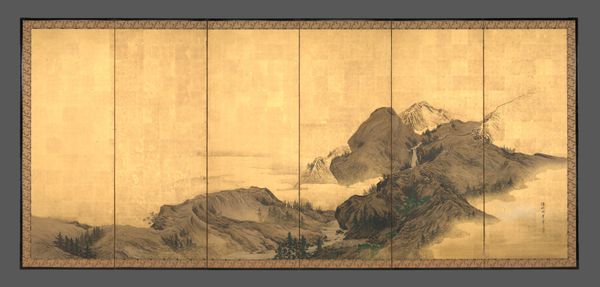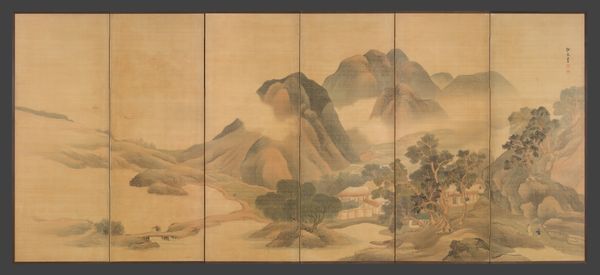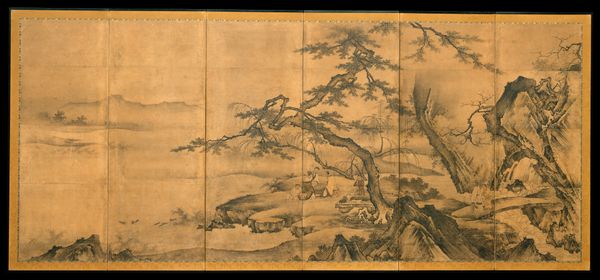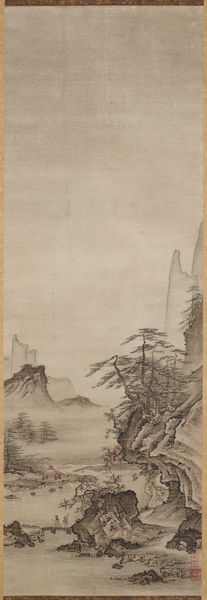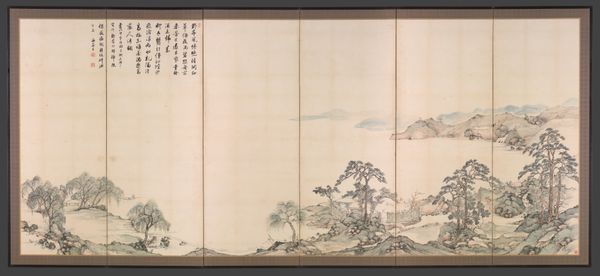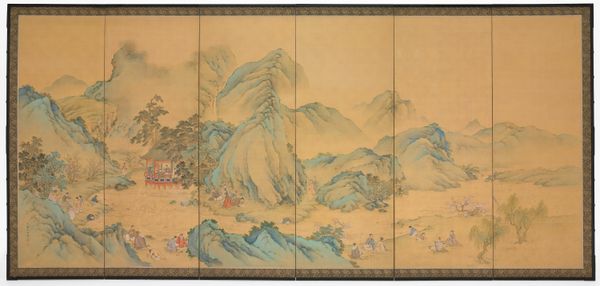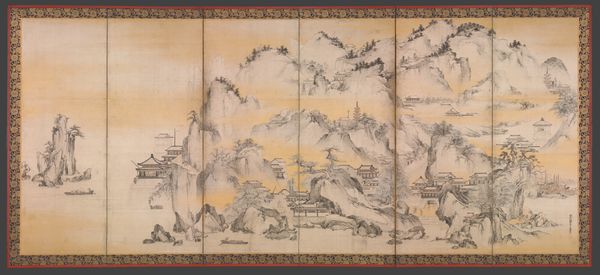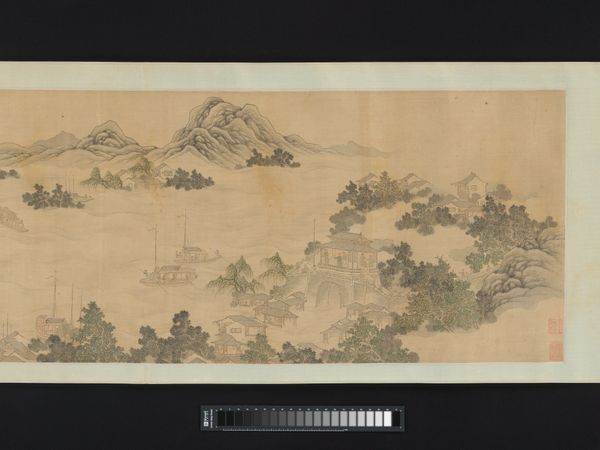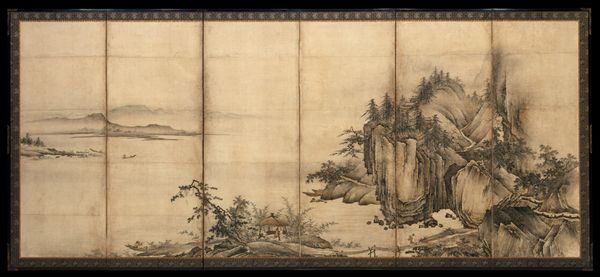
tempera, painting, paper, ink
#
tempera
#
painting
#
asian-art
#
landscape
#
paper
#
form
#
ink
#
line
#
realism
Dimensions: 60 5/8 in. × 9 ft. 6 3/16 in. (154 × 290 cm) Overall with mounting: 68 in. × 9 ft. 11 11/16 in. (172.7 × 304 cm)
Copyright: Public Domain
Curator: Here we have Tenshō Shūbun’s “Mountain Landscape,” a striking ink and tempera on paper screen believed to have been created sometime between 1414 and 1463. Editor: The subdued palette certainly gives it a somber, almost meditative quality, wouldn't you agree? I notice how the line work, while detailed, remains delicate and controlled. It seems less about precise representation and more about evoking a mood. Curator: Absolutely. Let's consider the screen itself. Its physical presence shapes the viewing experience. As a functional object in a domestic space, it inherently influences the interaction between the inhabitants and the depicted landscape. Also, ink on paper, though seemingly simple, was highly refined and demanded mastery to control. Editor: Yes, the landscape elements resonate with the deeper symbolism often associated with mountains in Asian art. There’s a sense of permanence and spiritual transcendence. Those figures on the path, they're so small in comparison, really emphasizing humanity's relationship to a larger cosmic order. Curator: The question then is: what was the source for the materials themselves? The paper, ink, the tempera binder… tracing them back to their origins will lead us to new information regarding 15th-century Japanese production practices and how the availability and refinement of these influenced aesthetic choices. Editor: Also notice that building nestled atop one of the peaks! These architectures usually evoke connotations of a sacred place, connecting heaven and earth. Did it maybe inspire reverence for a long lineage of rulers or gods? Curator: These visual cues definitely emphasize social hierarchy, as does the production itself and its inherent dependence on many specialized labors for refinement, selection, and trade that have historically impacted cultural understanding of nature and status. Editor: Fascinating. I leave appreciating anew how "Mountain Landscape" creates an intersection between symbolic depth and material craftsmanship, giving it powerful enduring depth. Curator: Yes. The landscape, thus, is much more than meets the eye as we recognize social significance embedded inside the image from the paper and ink used in its production.
Comments
No comments
Be the first to comment and join the conversation on the ultimate creative platform.
